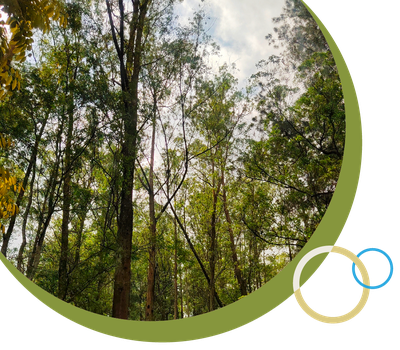



planet
Climate Risks & Opportunities13
We regularly conduct climate change risk assessments to better understand and mitigate the physical and transition risks that may impact our stores, distribution centers, suppliers, and cotton sourcing, with our most recent update completed in 2023. Through these assessments, aligned with Task Force on Climate-Related Financial Disclosures (TCFD), we gain insight into the long-term adverse impacts that climate change could have on our business and operations, along with the potential business and strategic opportunities. Our most recent risk assessment in 2023 led us to operationalize the findings by including climate risk assessments within our new store evaluation process, alongside financial and market considerations.

As investor interests in climate change management increase, companies facing elevated transition risk have been valued at a discount in recent years, especially those not taking proactive mitigation efforts.14

Impact Areas
PHYSICAL RISKS
- Acute: Extreme weather events, e.g., severe flooding, droughts
- Chronic: Increased temperatures, extreme rainfall, sea level rise, water scarcity, etc.
TRANSITION RISKS
- Failure to meet or properly report progress on our climate targets
- Public expectations or regulatory requirements
- Additional costs from current and emerging regulation related to emissions reductions or global carbon tax schemes
- Increasing consumer awareness of environmental issues resulting in industry pressure for companies to offer more sustainable products
- Improvements in technology may influence the viability of the use of alternative materials
OPPORTUNITIES
- Offer more sustainable products
- Strong climate action and target setting
- Expanding supplier engagement through improved collection of their GHG emissions and climate target reporting
Emissions Scenarios
- Aligned to TCFD
- Physical risk scenarios, including Representative Concentration Pathways (RCP) 2.6 and bespoke transition scenarios aligned with 1.5 degrees C.
Scope
- Carter’s owned operations – stores, distribution centers
- Value chain – suppliers, cotton sourcing
Time frame
- Short: 1–2 years
- Medium: 3–4 years
- Long: 5–10 years
Decision-making
- We have begun to include climate risk assessments within our new store evaluation process, alongside financial and market considerations.
13 For a full list of our climate-related risks and opportunities, please see the Disclosure Index.
14 Corporate Climate Risk: Measurements and Responses, Yao, et al. 2020.
Life Cycle Assessment (LCA)
Life Cycle Assessment (LCA)
Another advantage of transitioning to 100% sustainable cotton and polyester fibers by 2030 is the anticipated reduction in GHG emissions linked to the raw materials of our products. To aid us in tracking these reductions, in 2023 we began the LCA process for our top-selling product – the five-pack of our size six-to-nine-month bodysuit. We conducted a preliminary assessment that analyzed this item from cradle-to-gate across various impact areas. Moving forward, we aim to expand this assessment and develop reduction plans that address these impacts.
After the purchase of our apparel products, we recognize that energy consumption during their care and cleaning generates emissions, particularly when warm or hot water is used. As a result, all care labels on Carter’s apparel products advise for cold-water washing.

Arbor Day Foundation
Arbor Day Foundation
For the second year in a row, in 2023 Carter's employees partnered with the Arbor Day Foundation and supported the planting of more than 10,000 trees for The Cauvery Calling Project – a reforestation project in India’s Cauvery Basin aimed at improving soil fertility, water runoff, and food security for the lives of 84 million people, including more than 17,000 factory workers, in the region. With these contributions, we supported15:
~24,000 metric tons CO2 emissions sequestered, equivalent to 5,130 cars off the road for one year
~6.6 million gallons of water runoff avoided, equivalent to water provided to ~80,000 people for one day
In 2023, Carter’s further supported our reinvestment in future generations by planting nearly 350 trees to celebrate the arrival of every new child welcomed to a Carter's employee that year.
15 Emissions equivalency as determined by Arbor Day Foundation, i-Tree calculator.
Biodiversity
Biodiversity
We are committed to the continual reduction of the environmental impacts of our products and operations. Our commitment extends to raw materials usage, as we seek to incorporate materials certified by third-party sustainability standards.
We regularly monitor, review, and scrutinize our operations for continuous environmental improvement, including the third-party factories that manufacture our products. We are exploring additional ways to reduce our impact on biodiversity and expect to disclose progress in future reporting.




















